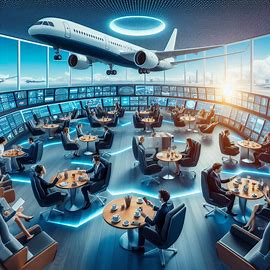
Introduction
Air travel today is more than just getting from point A to point B—it’s about how you feel during the journey. Whether you’re a business traveler looking for connectivity or a vacationer seeking comfort, the type of aircraft can make a significant difference in your in-flight experience. Modern airliners are designed with passengers in mind, offering enhanced seating, quieter cabins, mood lighting, and advanced entertainment systems.
This comprehensive guide explores which commercial aircraft offer the best passenger experience, comparing features across different models and manufacturers to help you understand what to expect when you board.
1. Defining Passenger Experience: What Matters Most?
1.1 Core Elements of a Positive In-Flight Experience
When evaluating the best passenger experience aircraft, it’s important to define what makes a flight comfortable and enjoyable. Key elements include:
- Seat comfort and layout
- Cabin pressure and air quality
- Noise levels
- Onboard entertainment and Wi-Fi
- Lighting and aesthetics
Passenger expectations have evolved, and airlines respond by choosing aircraft that excel in these categories. Manufacturers like Airbus and Boeing now prioritize human-centered design.
1.2 Impact of Aircraft Type vs. Airline Configuration
While the aircraft plays a significant role, airlines also customize their interiors. For example, a Boeing 787 operated by Qatar Airways may feel different from the same model used by American Airlines.
Key Influencers Beyond Aircraft Model:
- Seat pitch and width adjustments
- Entertainment system quality
- Cabin class offerings (Economy, Premium Economy, Business)
Therefore, while this guide focuses on aircraft capabilities, the airline-specific configuration also contributes to the overall experience.
2. Top Aircraft Models for Passenger Comfort
2.1 Airbus A350 XWB: Quiet, Spacious, and Modern
The Airbus A350 XWB (Extra Wide Body) is widely considered one of the most comfortable commercial aircraft.
Key Features:
- Wider cabin allowing 18-inch economy seats
- LED mood lighting that adjusts for jet lag
- Composite materials for better cabin pressure and humidity
- Quieter engines (Rolls-Royce Trent XWB)
Passengers report reduced fatigue and improved comfort, especially on long-haul flights.
2.2 Boeing 787 Dreamliner: Advanced Comfort and Eco-Friendly
Another leader in passenger satisfaction is the Boeing 787 Dreamliner.
Standout Comfort Features:
- Larger windows with electronic dimming
- Lower cabin altitude (6,000 feet) and higher humidity
- Smooth Ride Technology reduces turbulence
- Quiet, fuel-efficient engines
This aircraft is ideal for travelers prone to jet lag or motion sickness and has received high marks for cabin ambiance.
Comparison Table: A350 vs 787
| Feature | Airbus A350 XWB | Boeing 787 Dreamliner |
|---|---|---|
| Cabin Width | 220 inches | 216 inches |
| Cabin Pressure Altitude | 6,000 ft | 6,000 ft |
| Humidity Control | Yes | Yes |
| Noise Level | Very low | Very low |
| Window Technology | Standard + LED lighting | Electronic dimming windows |
3. Short-Haul Champions: Comfort in Smaller Packages
3.1 Airbus A220: The Small Jet with a Big Feel
The Airbus A220 was designed with passenger experience in mind, especially for regional and short-haul flights.
Notable Features:
- Larger windows than typical narrow-bodies
- 2-3 seat configuration allows more personal space
- Quieter Pratt & Whitney geared turbofan engines
- Advanced lighting and high ceilings
Passengers frequently praise the A220 for its surprising spaciousness and modern feel, often rivaling wide-body comfort on short trips.
3.2 Embraer E2 Series: Premium Regional Flying
The Embraer E2 series is revolutionizing regional jet comfort.
Comfort Enhancements Include:
- No middle seats in a 2-2 configuration
- Quieter, more efficient engines
- Redesigned overhead bins and ergonomic seating
These aircraft provide a boutique flying experience often lacking in older regional jets. They’re especially appreciated on high-frequency, short-distance routes.
4. Business and First Class Experience
4.1 Best Aircraft for Premium Cabins
Passenger experience varies drastically between Economy and Business or First Class. Aircraft designed with spacious upper-class sections stand out.
Top Business Class Experiences by Aircraft:
- Airbus A380: Suites and showers (Emirates)
- Boeing 777-300ER: Wide seating and luxurious cabins
- A350 & 787: Innovative seat designs and privacy options
Many premium travelers prefer the A380 for its sheer spaciousness and low cabin noise levels.
4.2 Cabin Layout and Privacy Innovations
In recent years, first and business class cabins have introduced pod-style seating, lie-flat beds, and private suites.
Notable Innovations:
- Qsuite by Qatar Airways (on A350 and 777)
- ANA’s “The Room” business class (on 777)
- Emirates First Class suites (on 777 and A380)
Aircraft that accommodate these layouts effectively enhance the experience through smart cabin design and low ambient noise.
5. Passenger Feedback and Experience Metrics
5.1 How Airlines and Manufacturers Measure Comfort
Airlines and OEMs (Original Equipment Manufacturers) rely on data and feedback to refine passenger experience.
Common Evaluation Metrics:
- Net Promoter Score (NPS)
- Seat satisfaction surveys
- Cabin ambiance and noise tests
Manufacturers conduct extensive in-flight testing and gather real-time feedback through mobile apps and post-flight emails.
5.2 Real-World Passenger Reviews
Passenger feedback helps identify consistent trends:
Most Praised Aircraft:
- Airbus A350: Comfort, lighting, humidity
- Boeing 787: Quietness, window tech
- A220: Spaciousness for short flights
Common Passenger Requests:
- More legroom
- Improved Wi-Fi reliability
- Better meal service
Real testimonials highlight that while aircraft design is crucial, airline service levels are also integral.
Conclusion: Which Aircraft Wins for Passenger Experience?
Choosing the best aircraft for passenger experience depends on route, cabin class, and personal preferences. However, some models consistently receive top marks:
Overall Best Aircraft:
- Long-haul: Airbus A350 XWB and Boeing 787 Dreamliner
- Short-haul: Airbus A220 and Embraer E2
- Premium travel: Airbus A380 and Boeing 777
These aircraft offer a blend of cutting-edge technology, smart design, and tangible passenger benefits. Airlines that equip their fleets with these models are investing in a superior travel experience.